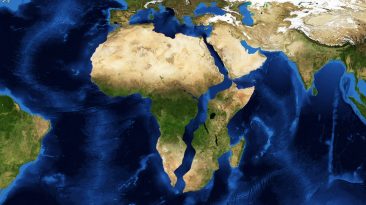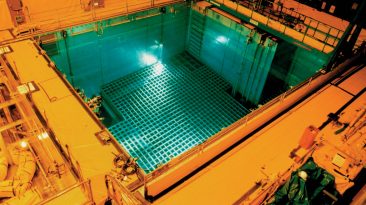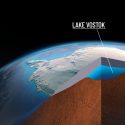Humans have explored the Moon, Mars, and of course, Earth. But what do we know about Jupiter?
For the most part, this gas giant is a mystery. So what would happen if you wanted to discover it for yourself and jumped right onto the planet? Or should we say into? Because Jupiter doesn’t have a surface, just a seemingly endless stretch of atmosphere.
Would you fall straight through? What would you see on your way? And how would it make you feel?
If you attempted to jump into Jupiter wearing a standard space suit, it’d be over for you pretty quickly.
First of all, you wouldn’t even make it to the planet. Roughly 300,000 kilometers (200,000 miles) from Jupiter, radiation would penetrate your suit and you’d die.
But that’s a boring What If. We’ll give you a special space suit that can survive the fall… for now. Here’s where the real fun begins.
At first, you’ll be falling from the top of the atmosphere at nearly 180,000 km/h (110,000 mph). This is a lot faster than you’d fall from the top of Earth’s atmosphere because Jupiter’s gravity is much stronger than Earth’s.
You’ll still be able to see the sun, but don’t expect it to heat you up. At about 250 km (155 miles) down you’d reach the ammonia clouds and experience -150 C (-240 F) temperatures.
Now, get ready for the most epic whirlpool of your life. Jupiter’s clouds create powerful winds, up to 482 km/h (300 mph). You’d feel as if you were in one giant, colorful tornado. That’s because Jupiter is the fastest rotating planet in our Solar System. One day on the planet is equal to 9.5 Earth hours.
Let’s go down about 120 km (74 miles) more. Congratulations! This is the deepest that any exploration has ever sailed into the gas giant.
In 1995, NASA’s Galileo probe made it this far before it was destroyed by the pressure of Jupiter’s atmosphere. But don’t worry, that’s not happening to you. The further you travel, the darker it will get, until it’s completely pitch black.
The only source of light you’ll have will be from the lightning storms happening all around you. At this point, the temperature will start to increase, and it might even feel comfortable if it weren’t for the immense physical pressure you’ll be feeling.
The pressure you’d experience is more than 1,000 times higher than on the surface of the Earth. The only way you’d be able to survive is if your space suit was built like the deepest diving submarine of all time.
By now, you’ve been falling for 12 hours and, let’s be honest: you’re getting a little bored. You’d probably want to radio someone to come and get you. Well, too bad. That’s an imossibility inside Jupiter; since radio waves get absorbed this deep into the planet’s atmosphere.
You’ll just have to keep falling. The temperature will keep rising, and so will the pressure. As you reach the inner layers of Jupiter, there’ll be parts that you’ll be able to swim through. A substance that’s not quite liquid or gas, known as supercritical fluid.
Moving through this strange material, the temperature will get even hotter. Eventually, it’ll be equivalent to the surface of the sun. If that isn’t enough, you’ll also be experiencing pressure equal to 2 million times the pressure on Earth.
Metallic hydrogen will begin to form, and you’ll be surrounded by it. This relatively unknown substance can be a dense liquid that you won’t be able to escape from.
If you do manage to escape, you’d be falling through it for thousands of kilometers until you reach Jupiter’s core, possibly a solid object. Some scientists predict it is, due to the immense pressure at this level in the planet.
Regardless of what it is, if you somehow did manage to survive all this, you’d be stuck from all the atmospheric pressure.
Not a very rewarding trip. Maybe we should leave the planet as a beautiful mystery.
Subscribe to What-If on Youtube or follow the show on Facebook Watch.
Sources
- “What Would It Be Like To Fall Through Jupiter? | Realclearscience”. Pomeroy, Ross, 2017. realclearscience.com. Accessed December 5 2018.
- “What Would Happen If Humans Tried To Land On Jupiter”. 2018. Youtube. Accessed December 5 2018.
- “Seeing As How Jupiter Is A Gas Giant, What Would Happen If We Would Step Foot On It? Would We Keep Falling To The Centre? : Askscience”. 2018. reddit.com. Accessed December 5 2018.
- “Atmosphere Of Jupiter”. 2018. en.wikipedia.org. Accessed December 5 2018.
- “Jupiter Radiation Belts Harsher Than Expected”. 2018. Sciencedaily. Accessed December 5 2018.
- ““New Views Of Jupiter” Showcases Swirling Clouds On Giant Planet – Europlanet Society”. 2018. europlanet-society.org. Accessed December 5 2018.
- “How To Protect Astronauts From Space Radiation On Mars”. Fraizer, Sarah, 2017. NASA. Accessed December 5 2018.



























